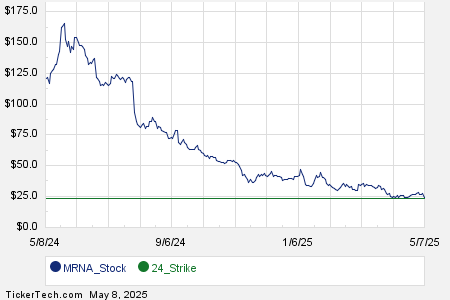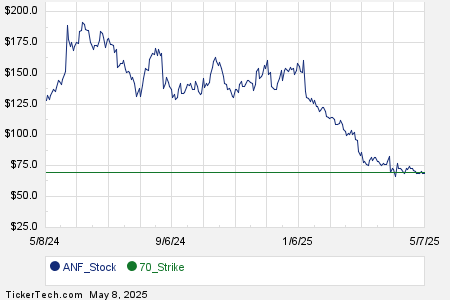Coffee Prices Rise as Global Production Concerns Persist
On Thursday, July arabica coffee (KCN25) closed at +3.25 (+0.85%), with July ICE robusta coffee (RMN25) rising +26 (+0.50%). Overall, coffee prices increased moderately and are stabilizing just below recent highs.
Brazil Faces Challenges in Coffee Production
Last Tuesday, arabica coffee reached a 2-1/2 month high while robusta climbed to a 5-week high, driven by worries about a smaller harvest in Brazil. Rabobank’s April 22 forecast anticipates a -13.6% year-over-year decrease in Brazil’s 2025/26 arabica coffee crop to 38.1 million bags. This prediction primarily stems from dry weather affecting key growing regions, which has curtailed the flowering of coffee trees. Additionally, Cecafe reported a -26% year-over-year decline in Brazil’s March green coffee exports, totaling 2.95 million bags.
Weather and Rainfall Affecting Coffee Production
Coffee prices received support from last week’s insufficient rainfall in Brazil. According to Somar Meteorologia, Minas Gerais, the country’s largest arabica-growing state, saw only 1.5 mm of rain, just 21% of its historical average.
Vietnam Reports Drop in Coffee Exports
Robusta coffee gained some support after Vietnam’s National Statistics Office revealed that the country’s coffee exports fell -9.8% year-over-year to 663,000 metric tons during January to April 2025.
Increased Production Estimates Pressure Prices
On Tuesday, coffee prices faced downward pressure when Conab, Brazil’s crop forecasting agency, raised its 2025 coffee production estimate to 55.7 million bags, up from a previous January estimate of 51.81 million bags. This raised questions about the overall supply dynamics.
Demand Concerns Weigh on Coffee Prices
Widespread demand concerns are also contributing to bearish sentiment in the coffee market. Major commodity importers like Starbucks, Hershey, and Mondelez International highlighted that the U.S. baseline 10% tariff on imports could increase prices, further impacting sales volumes.
Improved Inventory Levels Add Bearish Pressure
Improving coffee inventory levels have introduced a negative factor for prices. ICE-monitored robusta coffee inventories reached a one-month high of 4,308 lots on Thursday. Similarly, arabica coffee inventories in ICE monitoring increased to their highest level in 2-3/4 months at 844,473 bags.
Regional Production Challenges and Global Outlook
Robusta coffee is finding support due to reduced production levels. In Vietnam, coffee production for the 2023/24 crop year is expected to decline by -20% to 1.472 million metric tons, marking the smallest crop in four years. Furthermore, the Vietnam Coffee and Cocoa Association revised its 2024/25 production estimate downward, dropping from 28 million bags to 26.5 million bags. Conversely, Rabobank expects Brazil’s 2025/26 robusta coffee crop to increase by +7.3% year-over-year, reaching a record 24.7 million bags.
Global Export Trends Impact Price Outlook
Increasing global coffee exports are another factor weighing on prices. On February 4, Conab reported that Brazil’s exports for 2024 rose +28.8% year-over-year to a record 50.5 million bags. However, the International Coffee Organization noted a -12.4% year-over-year drop in global coffee exports for December, totaling 10.73 million bags, as well as a -0.8% decline for the October to December period.
USDA Projections Offer Mixed Signals
The USDA’s biannual report, released on December 18, provided a mixed outlook for coffee prices. The USDA’s Foreign Agriculture Service projected that world coffee production for 2024/25 would rise +4.0% year-over-year to 174.855 million bags. Within that, arabica production is expected to increase by +1.5% to 97.845 million bags, while robusta production may climb by +7.5% to 77.01 million bags. Nevertheless, the USDA forecasts a -6.6% drop in ending stocks, potentially falling to a 25-year low of 20.867 million bags by the end of the 2024/25 season.
Future Estimates and Projections for Brazil
Looking ahead to the 2025/26 marketing year, Volcafe revised its Brazil arabica coffee production estimate downward to 34.4 million bags. This reflects an approximate 11 million bag drop from a September estimate, as crop tours highlighted the extent of ongoing drought conditions. Volcafe anticipates a global 2025/26 arabica coffee deficit of -8.5 million bags, widening from the -5.5 million bag deficit expected for 2024/25. This marks the fifth consecutive year of deficits.
On the date of publication, Rich Asplund did not have (either directly or indirectly) positions in any of the securities mentioned in this article. All information and data in this article are solely for informational purposes. For more information, please view the Barchart Disclosure Policy
here.
The views and opinions expressed herein are those of the author and do not necessarily reflect those of Nasdaq, Inc.


